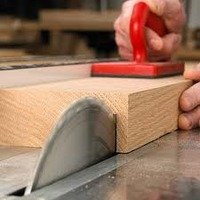Construction Inspections
/April 2012
by Bill Christenson
 Commercial contractors have long understood the need and requirement to accept responsibility for quality control of the construction work, both their own work as well as their subcontractors’ work. This entails proper staffing and expertise to perform the necessary ongoing inspection of the work. Municipal inspectors, whether they are city, county or state, also play an important role in the inspection process, however their inspections are mandated by the building permit and are very limited in scope and nature. It is not the role of the municipal inspector to oversee compliance with the contract terms, project plans or specifications.
Commercial contractors have long understood the need and requirement to accept responsibility for quality control of the construction work, both their own work as well as their subcontractors’ work. This entails proper staffing and expertise to perform the necessary ongoing inspection of the work. Municipal inspectors, whether they are city, county or state, also play an important role in the inspection process, however their inspections are mandated by the building permit and are very limited in scope and nature. It is not the role of the municipal inspector to oversee compliance with the contract terms, project plans or specifications.
There are contractors, and more commonly residential contractors, that rely completely on the municipal inspector for their project quality control. Their adage is: as long as the project passes inspection it’s acceptable and meets the necessary standards. This is a fallacy and completely disregards the contractor’s responsibility. The municipal inspector may be on the site only a half dozen or more times over the course of the construction project to perform code mandated inspections. Who is responsible to ensure the quality of the work during the other 99% of the project? That’s the contractor team’s responsibility, inclusive of the general contractor, subcontractors, and sub-tier subcontractors. The contractors are also accountable for work inspected by municipal inspectors, hence they are responsible for all of the work.
 Construction inspections can be contracted to independent third parties although this is more common in commercial construction than residential construction. The project architect / engineer is often contracted to perform inspection services. In these situations the inspection and quality control responsibilities must be carefully addressed in each contract between the owner, architect/engineer, and contractor. Building permits often require independent special inspections for certain complex phases of the work such as soils preparation (geotechnical engineer) or structural concrete and structural steel framing (structural engineer). When planning a construction project, make sure the parties understand and accept their roles for project quality control and that the necessary means and expertise are available for successful project completion.
Construction inspections can be contracted to independent third parties although this is more common in commercial construction than residential construction. The project architect / engineer is often contracted to perform inspection services. In these situations the inspection and quality control responsibilities must be carefully addressed in each contract between the owner, architect/engineer, and contractor. Building permits often require independent special inspections for certain complex phases of the work such as soils preparation (geotechnical engineer) or structural concrete and structural steel framing (structural engineer). When planning a construction project, make sure the parties understand and accept their roles for project quality control and that the necessary means and expertise are available for successful project completion.

